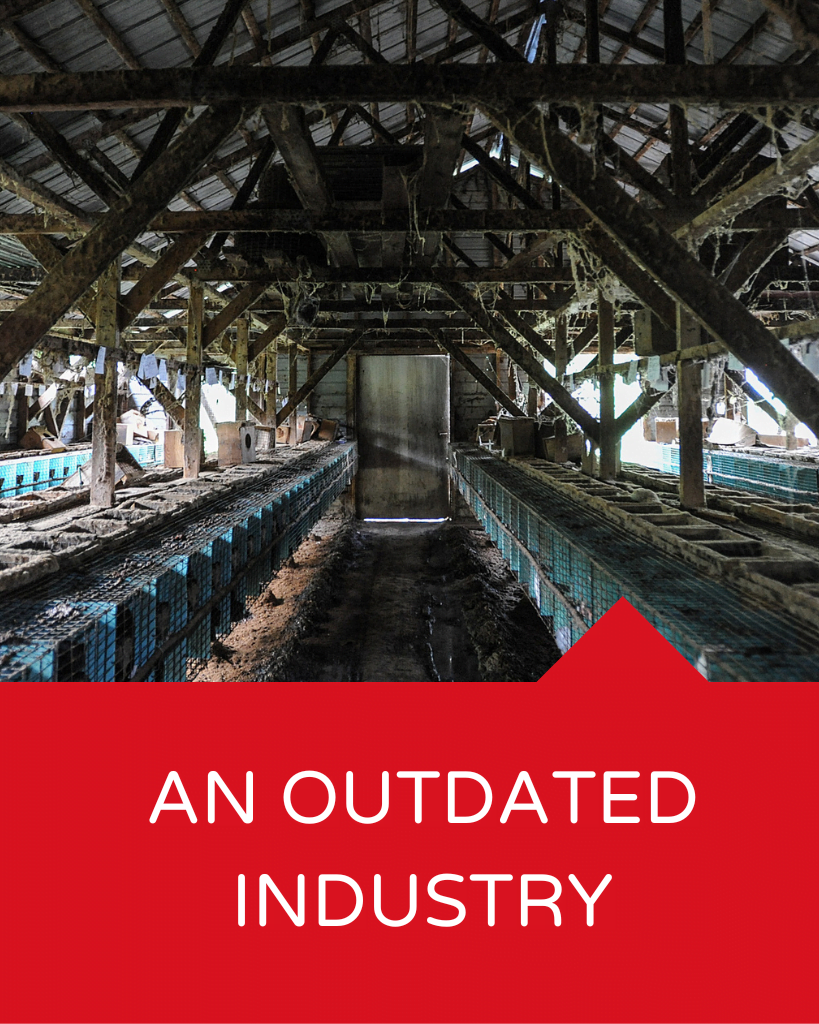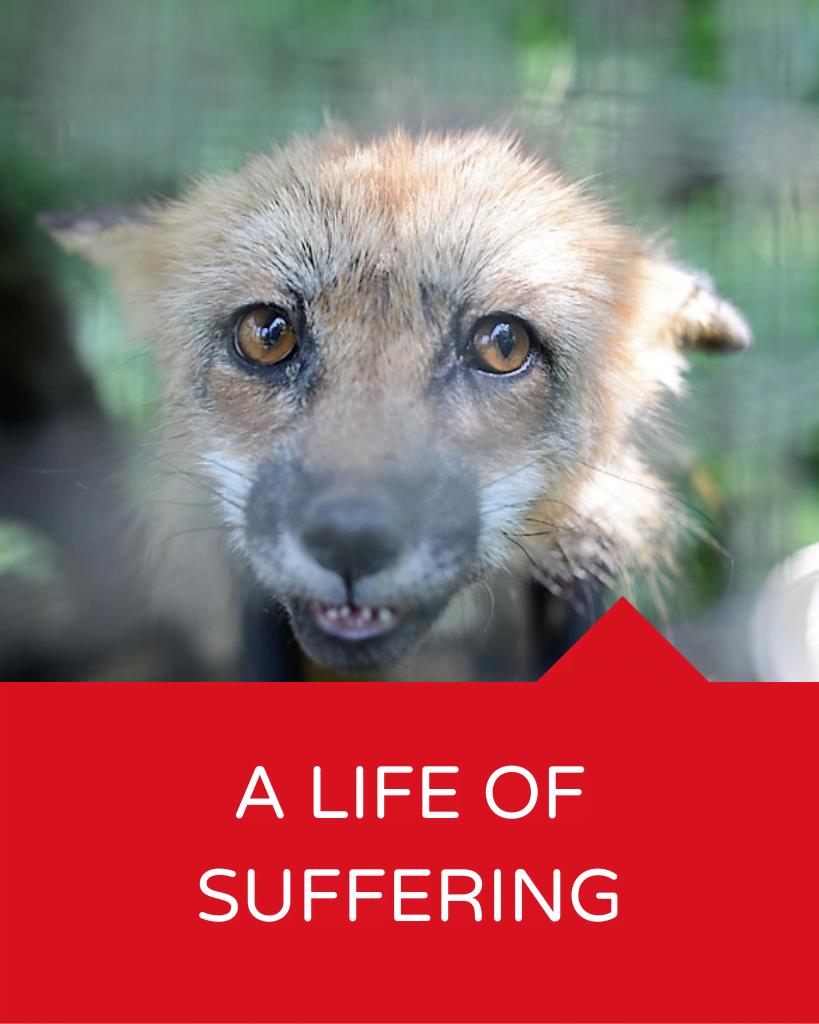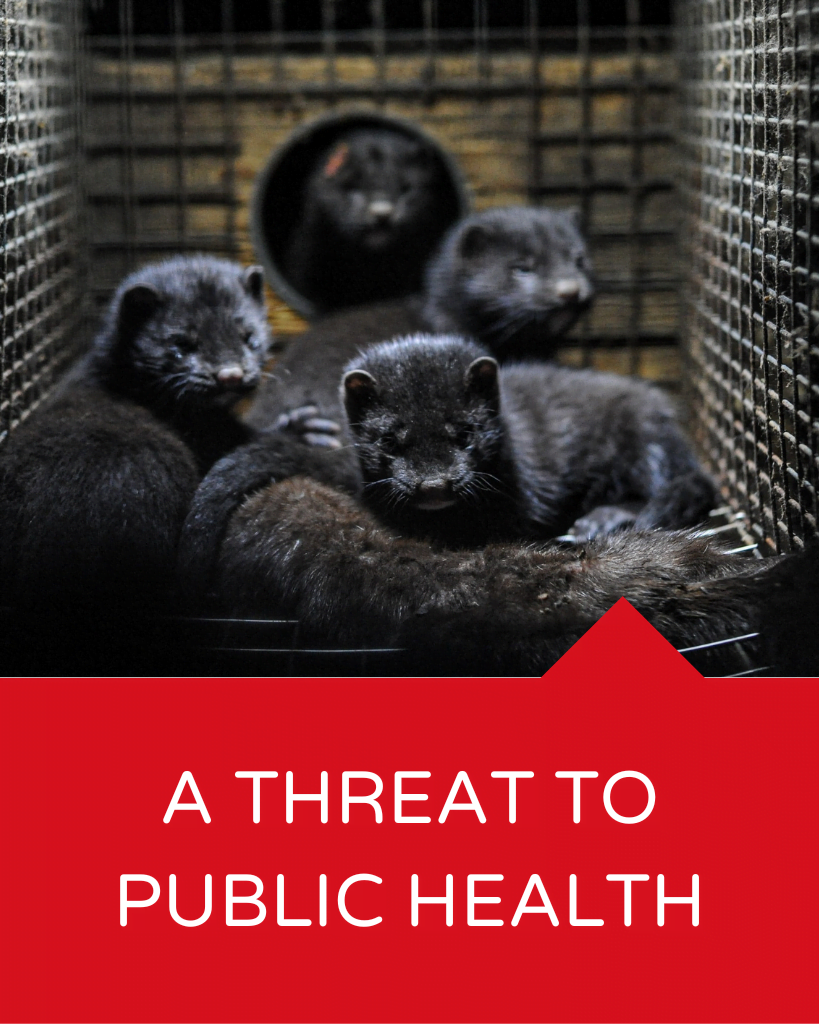Raising animals for their fur is most often conducted far from the public eye. Here are the answers to the most frequently asked questions about fur farms.
Did you know?
Countless victims…
— A female mink has an average of four kits (baby minks) per litter. A farm with 200 female minks produces about 735 baby minks, who are all killed in the same year, except those replacing the reproductive minks killed that year.27
— A female fox has an average of three pups per litter. Up to 50% of fox pups are kept for reproduction and a third of reproductive foxes are killed (information obtained from the Ministère de l’Agriculture, des Pêcheries et de l’Alimentation du Québec).
— 91.8% of minks killed in Quebec in 2018 were raised in captivity. (36,000 minks were raised in captivity and 3,265 were trapped28).
— In recent years, the total number of animals on fur farms across Quebec decreased29 by 92% for foxes from 2010 to 2020, and by 66 % for minks from 2010 to 2019.
Progress:
— British Columbia plans to ban mink farming as of April 2023 and the sale of mink fur as of 2025.30
Economic data:
— According to an investigation by the CBC, federal and provincial programs for financial aid (such as the program offered by the MAPAQ31) continue to support fur farms while the industry’s struggles stem from the market’s decline (Canadian-farmed fur sales dropped from $214 million in 2013 to $44 million in 2019). This raises the question of whether governmental grants and loans are artificially supporting an industry that not only goes against the values of many across Canada and Quebec, but that is also not economically viable.
— The average sale price of a mink pelt in Quebec in 2018 was $30.89.32
— In 2018, of the 1,589,000 pelts sold in Canada, 33,600 came from Quebec; this represents just 2.11% of sales.33
— Quebec fur farms export their entire production, with 98% going to the U.S. and the remaining 2% shared among Finland, Greece, Russia and South Korea34.









